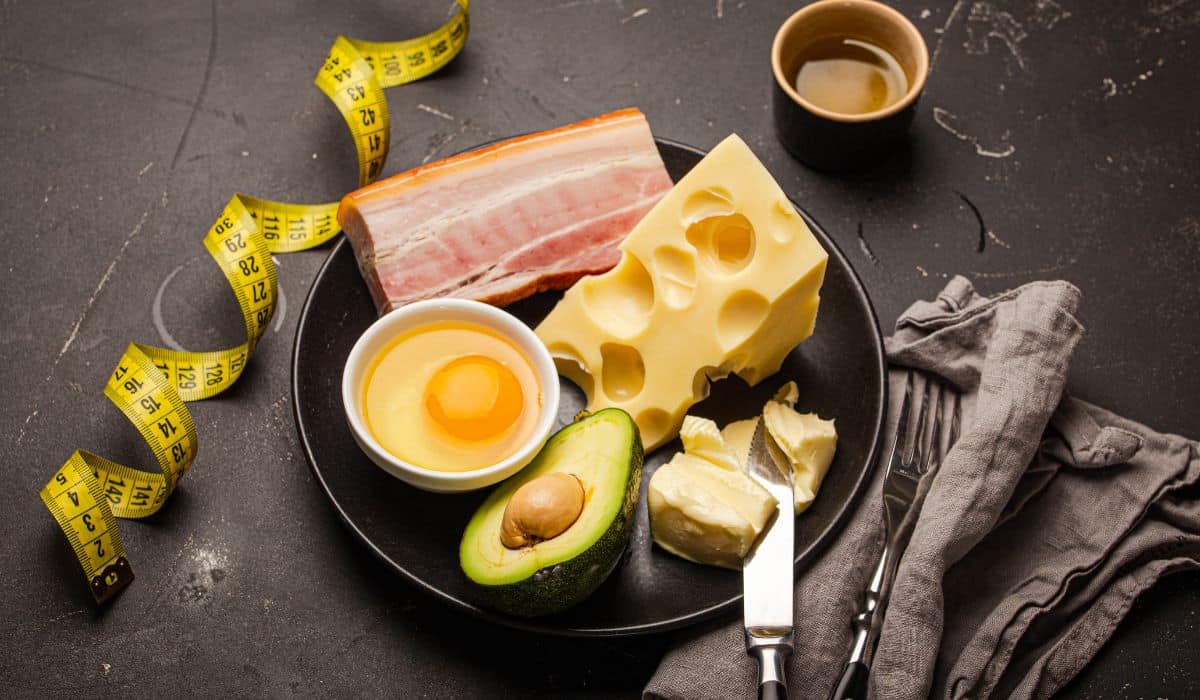
One of the common fears in the keto community is being “kicked out of ketosis.” If nothing else, the adaptation process is notorious for being painful. But there’s also the fear that any time spent out of ketosis is time wasted. If ketosis is the best way to go for weight management and health, why do anything that’s less than optimal?
Meanwhile, a lot of people who can’t or don’t feel ready to commit to a full keto diet might think that there’s nothing in ketosis for them and no way for them to get the related.
But in fact, it’s not necessary to be continually in ketosis to get some of the health benefits. Switching back and forth from carbs to fat may have benefits of its own, even if you can’t stay in ketosis continually. If anything, the “natural” way for humans to live is to periodically shift back and forth from carb-burning to fat-burning mode, rather than staying entirely in one or the other. With the exception of a very few groups, like the Inuit, most hunter-gatherer societies do eat some carb-rich foods - but they also undergo periods of fasting and intense physical activity that push them towards fat burning.
Here’s a look at the potential benefits of metabolic switching - going back and forth from fat-burning to carb-burning mode.
Benefits of metabolic switching

Ketosis is helpful for weight loss for all kinds of reasons. It suppresses appetite, which is handy. It’s helpful for improving insulin sensitivity and managing energy/blood sugar fluctuations. It’s a popular weight-loss strategy for a reason! But for weight loss and general well-being in healthy adults, there’s no need to be in ketosis all the time. People who typically do keto might benefit from short periods out of ketosis, and people who aren’t fully on the keto train might benefit from switching to a fat-burning metabolism every now and again.
This study explains the benefits of periodically switching between a more ketogenic, fat-burning metabolic state and a “normal,” carb-burning state:
“intermittent metabolic switching, repeating cycles of a metabolic challenge that induces ketosis (fasting and/or exercise) followed by a recovery period (eating, resting and sleeping), may optimize brain function and resilience throughout the lifespan, with a focus on the neuronal circuits involved in cognition and mood. Such metabolic switching impacts multiple signalling pathways that promote neuroplasticity and resistance of the brain to injury and disease.”
In less technical terms, this paper is arguing that metabolic switching may help improve the capacity of the brain to respond to stress, repair itself, and maintain healthy function as we age.
Metabolic switching may also have physical benefits. This study, in mice, tested two groups of mice. Both groups did exercise training (wheel running), but one group got regular food and the other had an alternate-day fasting routine. On fasting days, the fasted mice burned more fat for energy, relative to carbs, indicating a metabolic shift. At the end of the study, the alternate-day fasting mice were better wheel runners.
Metabolic switching in practice
There are actually a lot of ways to make metabolic switching happen in practice -
Varying the amount of carbohydrate in your diet
This one is possibly the easiest way to do it: sometimes eat keto, and sometimes add more carbs, as in any one of the many carb re-feeding protocols for ketogenic diets. Per this article, it takes between 3 days to 1 week of keto eating for most people to reach the threshold of nutritional ketosis (“keto flu” or other induction symptoms may last longer than that, depending on the cause, but the metabolic shift occurs within a couple of days). Coming back the other way, it takes very little time after eating carbs to get out of ketosis.
Non-keto diet with periodic fasting

For people who would rather eat nothing than eat keto - the concept here is to eat a higher-carb diet normally, with periods of fasting to induce ketosis. This study indicated that men may need to fast longer than women to achieve a ketogenic state, but that 30 hours is enough for men and more than enough for women - that fits pretty well with the one-day fasting or alternate-day fasting protocols that have been shown to deliver other benefits as well.
Intense, challenging exercise
This is the fastest way to switch from carb-burning to fat burning. There’s a lot of evidence that intense exercise triggers the same kind of metabolic switch as fasting/ketogenic diets. After the carbohydrate stored in the liver is all gone, your body starts turning more and more to fat for fuel. High-intensity intervals are the most efficient way to do this, but lower-intensity exercise for a longer period of time (like long-distance running) can also work. But it has to be intense relative to your abilities. Athletes have to work harder than couch potatoes to get the same effect.
Because different people have such widely varying levels of fitness, there's no one rule for "Run X miles or Y number of sprints" - the most applicable advice for people outside a lab might be "push until you want to quit, and then keep pushing."
There are also ways to combine diet with exercise to speed this up a bit. For example, eating a high-carb diet, carb-loading before an event, eating carbs (Gatorade, gels, etc.) during an event, and replenishing carbs right after a workout can all limit or prevent glycogen depletion and fat-burning during or after exercise. Conversely, eating a lower-carb diet (not necessarily keto, just not high-carb), not carb-loading, and limiting carbs during a workout can help get that switch going faster.
Mix & Match
You can definitely mix and match these strategies - occasional one-day fasts with periodic very tough workouts, or maybe one of the many carb-refeeding strategies that play nicely with keto.
Will I get keto flu every time?
Even if there are health benefits to switching in and out of ketosis, who would ever want to put up with the notorious “keto flu” all the time? Nobody, of course, but there's decent evidence that it's not inevitable.
For one thing, quite a few “keto flu” symptoms are actually caused by electrolyte problems, because a lot of keto beginners aren't aware they need to think about electrolytes at all. If you’re aware of this problem, you can easily forestall it - here’s how. There’s never a need for anyone to suffer from electrolyte problems while going keto or at any other time.
Also, a lot of people manage to pull off regular carb re-feeds on keto without experiencing keto flu symptoms bad enough to make it intolerable. Even more people do one-day fasts once a week or so, and then return to eating normally without experiencing awful metabolic symptoms. The whole concept here is to cultivate flexibility so that the metabolic switch isn’t so difficult and painful - and it clearly works for a huge number of keto and intermittent fasting devotees already.
But for those who just can’t hack it (maybe people with such severe metabolic damage that keto is the one and only option), there are definitely other ways to cultivate good brain health and neuroplasticity. This is one option among many, not the only way!
Do you ever go in and out of ketosis on purpose? Why? How? Let us know on Facebook or Twitter!





Leave a Reply